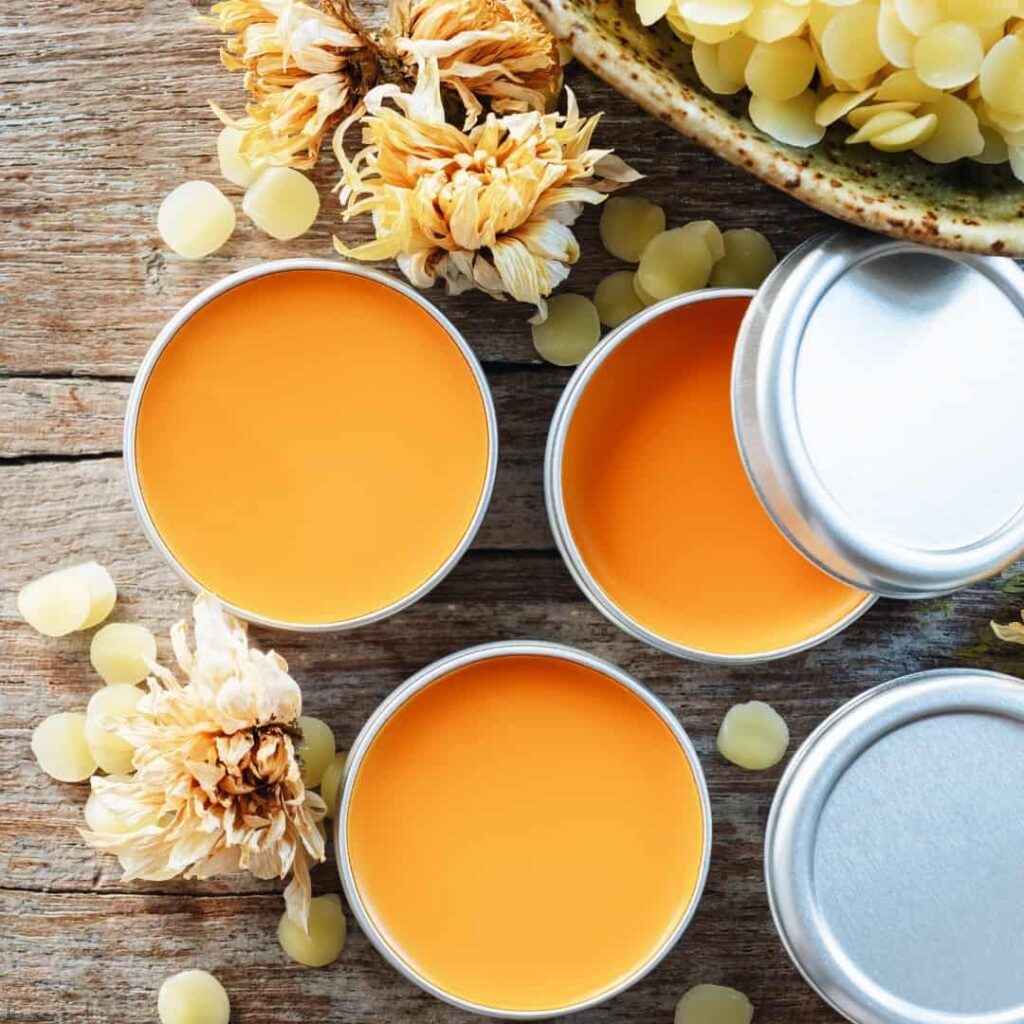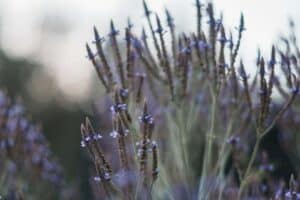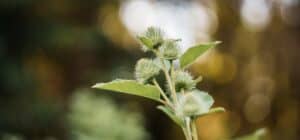Everyone experiences scrapes, cuts, and bruises at times. Therefore, everyone could benefit from an herbal first-aid kit at home. Simple and straightforward, herbal wound care is the best step to take if you’re new to herbalism, and always nice to refresh on if you’re advanced.
In today’s blog post, you’ll learn:
- The herbal approach to wound care
- The main herbal actions used in herbal wound care
- Specific herbs and their indications
- When to use moistening or drying herbs
- Why beeswax based salves are sometimes contraindicated
Table of Contents
Your Herbal First-Aid Kit
If you’ve been curious about herbalism for a while but have felt too intimidated to get started, herbal wound care is the perfect place for you to begin.
Free of complications concerning constitutions, astrological placements, and other philosophical (and practical) intricacies, herbal wound care is simple, straightforward, and often yields fantastic results in a short amount of time.
With everyone experiencing bumps, bruises, scrapes, and wounds from time to time, every home should have a set of herbal preparations ready to treat these, especially if you have kids that like to play rough outside! (Or if you play rough outside too =)
With this herbal wound care guide, you can take your first step towards preparing gentle yet powerful herbal remedies to support your wellness and the health of those you love.
Herbal Actions
When using herbs for wound care, the main herbal categories to employ include vulnerary, styptic, antiseptic, astringent, and demulcent herbs. Although not a category by itself, any herb that encourages a healthy proliferation of cells for healing of tissue and scar prevention are valuable plants to add to your kit as well.
Vulnerary and Antiseptic
Simply put, vulneraries are topical healing plants.
Vulnerary herbs often contain tannins, which are water-soluble constituents that weave and stitch together tissue proteins, thereby closing a wound through its tightening and contracting qualities. These herbs also assist to slow bleeding and often possess an inflammatory-modulating effect that encourages a healthy healing response from the body in the reparation process.
Whether you’re working with an open or closed wound, vulnerary herbs are always appropriate to use as their medicinal constituents enhance the natural healing process.
Antiseptic herbs assist in preventing and treating the infection that’s present. Fortunately, many vulnerary herbs possess antiseptic properties as well. Most of the time plants with antiseptic properties will either be rather bitter in taste, or contain aromatic compounds, like essential oils.
The most classic vulneraries used in Western herbalism include Calendula (Calendula officinalis), Plantain (Plantago major), and Comfrey (Symphytum officinale). These are really the main ones everyone uses, because they work. Though there are many others than can be used, these are really the best of the best in my opinion.
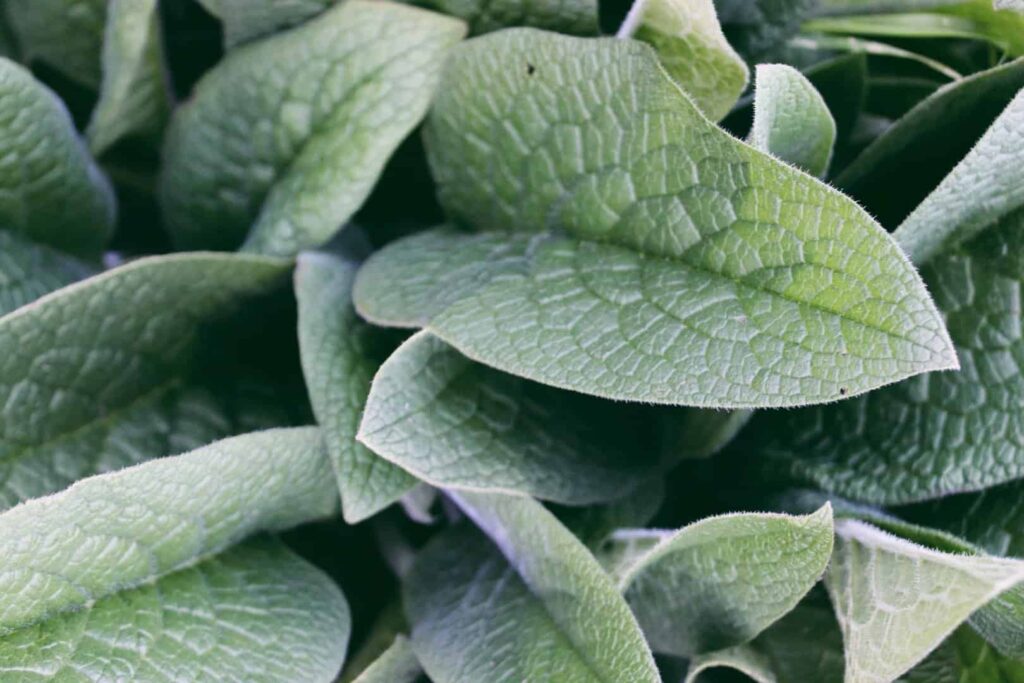
Styptic
Styptic herbs are indicated for open, bleeding wounds, as their main property is to stop excessive bleeding. This is usually done via tannins, though the styptics are usually really strong in their tannin content.
Although herbs of this nature can be used in minor wounds, some plants, such as Yarrow (Achillea millefolium), can be used in acute scenarios where profuse bleeding occurs. I’ve heard stories of copious amounts of Yarrow being used to stop bleeding some severe chainsaw wounds! The major stypic used in Western herbalism is Shephard’s Purse (Capsella bursa-pastoris), which is used both topically as well as internally as a stypic. This plant has classically been used to stop hemorrhage post childbirth.
If the wound requires a trip to the hospital, you can use styptic herbs to staunch blood flow until you receive medical care. In scenarios where you can manage at home, these plants can often be used on their own to provide fast-acting results.
Styptic herbs perform well when used as a poultice, applying the herb directly onto the wound, or taken internally when necessary.
Demulcent
Different scenarios call for drying or moistening herbs.
In the case of weeping and swollen wounds where puss and infection are present, drying herbs with lymphatic and astringent actions, such as Calendula (Calendula officinalis), are used to counter excess dampness.
However, in cases where there is painful dryness and splitting or cracking of the skin, thereby exposing the wound, demulcent and emollient herbs are indicated, such as Marshmallow (Althaea officinalis) or Plantain (Plantago lanceolata, or P. major).
These herbs contain mucilage, which means they assist in coating, soothing, and reducing inflammation while hydrating multiple layers of the dermis. The main thing that indicates their usage is dryness, which can occur with wounds from time to time, but also for more chronic dry skin conditions. Though it is worth mentioning that chronic skin conditions typically necessitate internal treatment and not just topical, as the root cause is often deeper in the body. These work well as fomentations, which essentially a cloth soaked in an infusion of the herb and wrapped around the afflicted area.
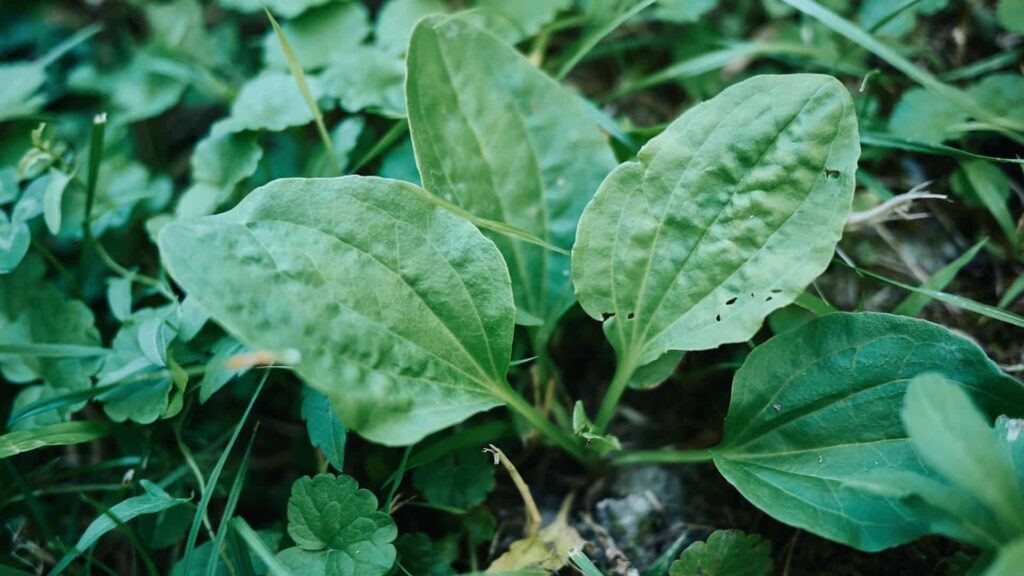
Cell Proliferation
Using herbs in salves or other medicines that encourage cell proliferation, such as Comfrey (Symphytum officinale), can assist in the repair of tissue damage and prevent scarring. These herbs make a supportive addition to many wound care protocols.
Materia Medica for Wound Care
When it comes to herbal wound care, there are numerous herbs you can work with. However, if the wound isn’t clean, any herb administered can exacerbate an irritated state and potentially trap foreign materials and thus increase the likelihood of infection.
The first step to treating any wound is to clean and dry it as best you can. By removing foreign debris, you create a clean area to apply medicine to and prevent further infection.
Once you’ve cleaned the area, you can work with the herbs below in the form of salves, oils, poultices, washes, soaks, fomentations, and gels to offer relief and healing.
Yarrow (Achillea millefolium)
If I had to highlight one herb for wound care, it would be Yarrow.
With its vulnerary, astringent, antiseptic, styptic, and inflammation-modulating properties, this herb is one of the best topical remedies available.
Yarrow is a powerful styptic that can address wounds larger than your average papercut. There have been numerous accounts featuring individuals who faced deep wounds due to chainsaw accidents. After spotting some local Yarrow, they used it to staunch bleeding and prevented infection from developing until they could take further action.
I learned from Matthew Wood that Yarrow was classically said to work on the “3rd level of the blood.” The first comprises the capillaries, the second of the arterioles, and the third of the arteries. If injury to the arteries occurs, consequences can be dire, as these are BIG vessels that are actively pumping blood, hence blood loss can be severe. In scenarios where immediate medical care isn’t available, Yarrow has expressed high efficacy at staunching blood on this third level, proving its potency as a styptic herb.
Shepherd’s Purse (Capsella bursa-pastoris)
A powerful astringent and styptic herb, Shepherd’s Purse is indicated for internal bleeding, especially when the wound is related to reproductive health. Though in our modern world, it’s probably best to use this plant for internal hemorrhage while you’re on your way to the hospital for safe measure.
This herb has been traditionally used to address hemorrhage and excessive bleeding post-childbirth. Although Shepherd’s Purse has a highlighted effect for internal bleeding, it can be used externally and topically in a fashion similar to Yarrow.
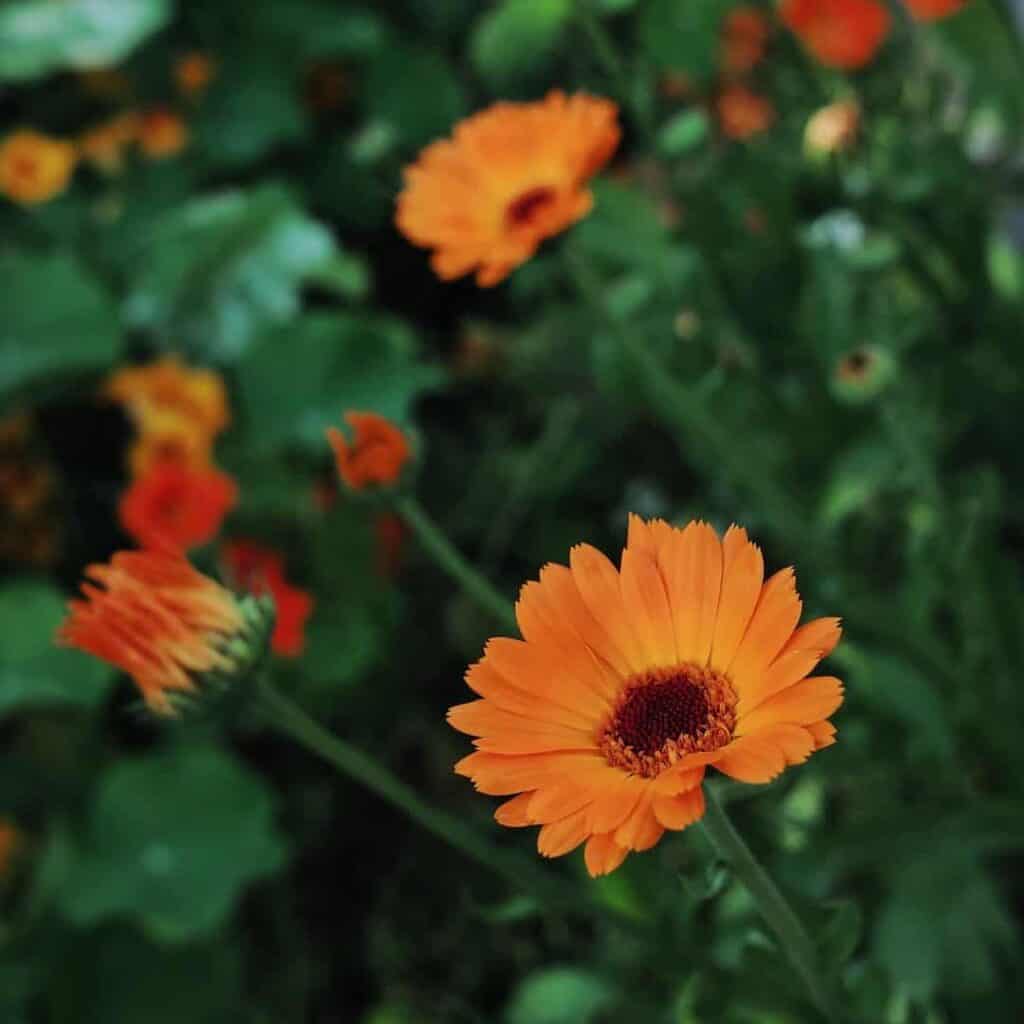
Calendula (Calendula officinalis)
It seems that everywhere you look today there are Calendula related wound care products, and for good reason.
Calendula assists in staunching bleeding, modulating inflammation, preventing infection, and can be used to wash cuts, insect bites, and irritated skin.
This herb is a classic vulnerary and antiseptic that works well as an “all-purpose” remedy by itself or in combination with other herbs to address numerous irritated skin conditions. One of the great things about Calendula is that it tends to heal the skin from the inside-out, meaning it works from the base layers of the tissues and heals outwards from there. This makes it quite applicable to deeper wounds, but works equally well for superficial ones too.
Comfrey (Symphytum officinale)
Comfrey is one of the most well-known herbs used in herbal wound care. However, there’s an aspect of this plant that many people forget.
This herb is phenomenal for cellular proliferation and, opposite to Calendula, heals wounds in a “top-down” manner, encouraging cellular turnover on the topmost layer of skin and then working its way down.
Because Comfrey works so effectively in this manner, it must never be used for puncture wounds or deeper lacerations. This is because it has the potential to seal the top layer of the skin and close it, trapping debris or bacteria on the inside, which can result in infection. But for most basic wounds Comfrey is an incredibly powerful remedy, primarily because of it contains the constituent allantoin, which is well researched for its ability to increase cellular proliferation.
In the case of puncture wounds, there is a different herb with a specific indication for this.
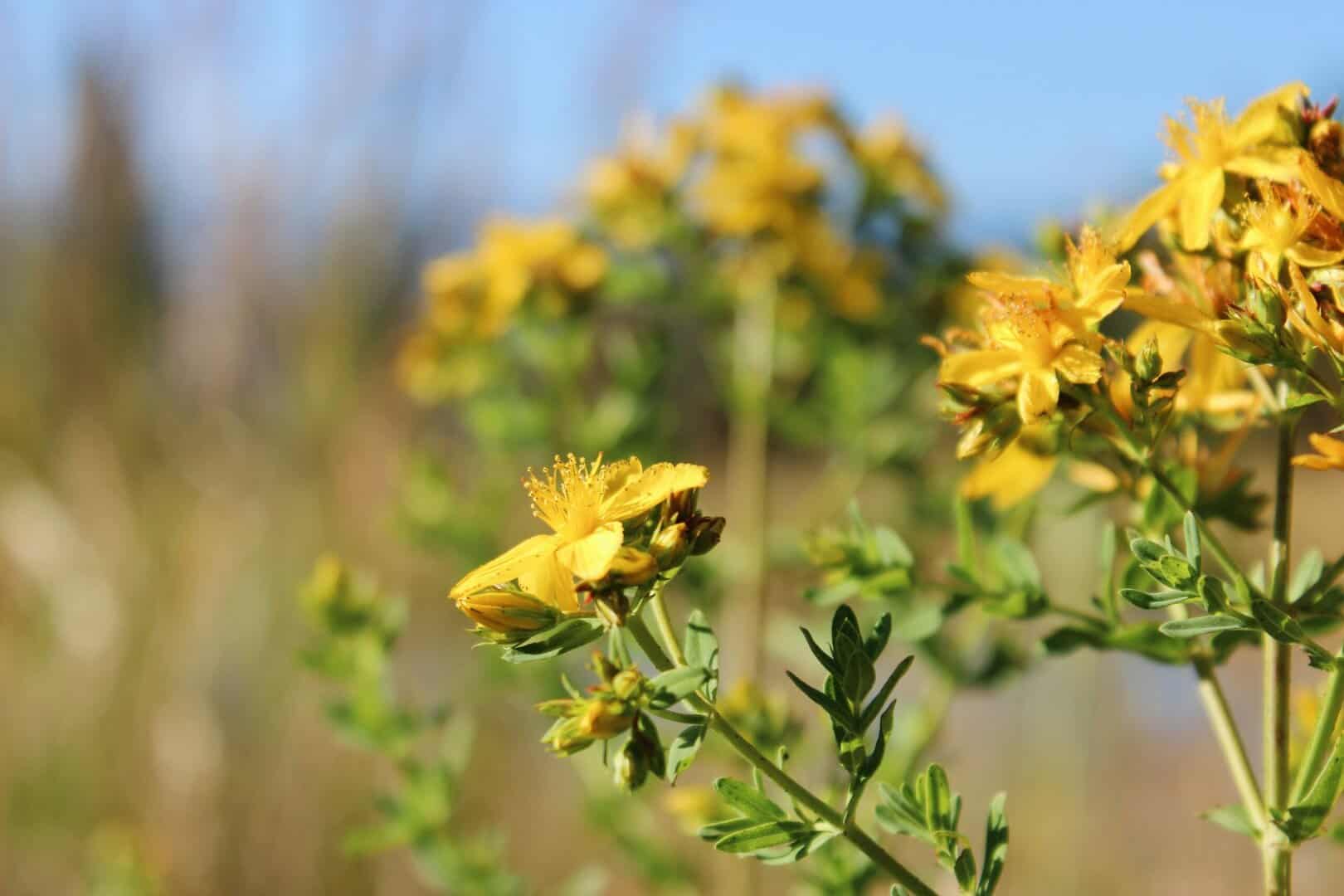
St. John’s Wort (Hypericum perforatum)
As the Latin species name perforatum suggests, St. John’s Wort is specifically indicated for puncture wounds. This is also revealed in the signature of the leaf, which when held up to the light looks like it has several punctures to it, or perforations.
This herb heals from the dermis up to the outer layer of the skin, making it a great herb to use for deep wounds. St. John’s Wort also works well to prevent blood poisoning, as with the case of tetanus. The thing about puncture wounds is that they can be extremely painful, with the muscles becoming tight in the surrounding area and excessive swelling. This swelling can press on the nerves and lead to sometimes extreme discomfort, as anyone that’s stepped on a nail can attest.
In addition to its other properties, it is very specific for nerve pain and inflammation, both topically and internally. This can be assessed by shooting pains that traverse a specific pathway down the length of the neuron, such as with sciatica. For nerve pain St. John’s Wort can be used both internally in the form of tinctures, spagyrics, or homeopathics, as well as topically, of which I prefer a simple infused oil.
Plantain (Plantago lanceolata)
This plant possesses a unique drawing effect that works as an herbal “vacuum.”
Plantain draws foreign material out of a wound, whether it be stingers, thorns, nails, splinters, or anything else that does not belong in the skin.
In the case where you cannot remove the material from the skin using tweezers or other appropriate tools, you can make a spit poultice using plantain to cover the region, let it sit, and remove it later once the item has been drawn out. I’ve seen this work dozens of times, from deep splinters to embedded bee stingers. Once the spit poultice dries out and is removed, the foreign material is often lodged in there. It’s really quite amazing!
Plantain is also a super useful general vulnerary, inflammation modulator, and soothing demulcent. While many herbalists consider it one of the best and most universal topical plants, don’t forget Plantain is also a really useful internal remedy. I primarily use it internally as a respiratory and digestive demulcent and inflammation modulator. Excellent for healing leaky gut as well!
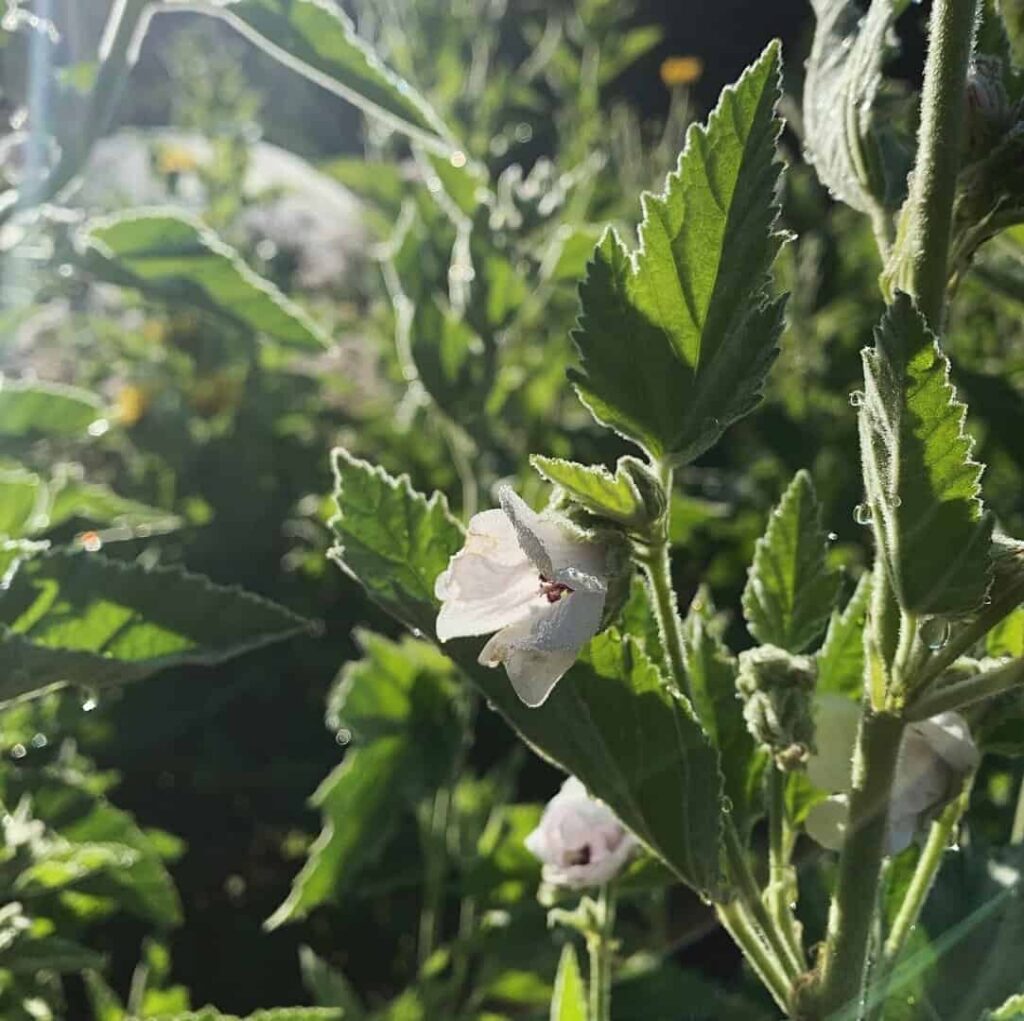
Marshmallow (Althaea officinalis)
Marshmallow is a mucilaginous herb that provides a soothing and protective coat to reddened or inflamed skin featuring dry characteristics.
With its anti-microbial, inflammation-modulating, immunomodulating effects, and the presence of tannins, this herb acts as a powerful vulnurary in healing injured tissues, whether they are internal or external. Though this is a remedy that does not yield well to most topical preparations like salves and infused oils. It’s best used as a fomentation, making a room temperature infusion of it to create a thick mucilaginous mass which can then be soaked into a cloth and wrapped around the afflicted area. You can also use the straight powder, mixing it with water to form a paste and applying that to the area, though this method probably shouldn’t be used with open wounds as the powder will get in there and be tough to get out!
Delivery Methods and The Case for Beeswax
One of the most common methods of administering topical plants for wounds is in the form of salves, which are herbal infused oils with beeswax melted into it. This makes for easier application of the infused oils and also helps with preservation to an extent. Though it is important to know that using beeswax based salves may be totally contraindicated in some situations.
On the one hand, beeswax can prevent dirt and infection from entering the wound, but on the other, it can also trap it in.
In the case of unbroken skin, such as a bruise or minor scrape, beeswax salves can be safely used to provide relief.
However, in the case of acutely infected wounds, especially with a staph infection, using beeswax will seal off the wound and create an anaerobic environment where bacteria and infection can thrive. Paul Bergner shared a case where someone put a beeswax based antimicrobial salve on a staph infection and the next day the infection/sore had spread to precisely the area where the salve was applied. In these cases, it is preferred to work with water-based extracts, such as poultices, washes, and soaks.
Another case where salves are less than preferable is for severe burns, serious 2nd and 3rd degree. This is often because the burn has gone deep enough to damage the oil glands and sweat pores, in which case a salve can block and clog these pores and lead to blistering and boils. The same is true for skin grafts, where these pores and still forming and need to remain open. Highly unctuous oils can also cause issues with severe burns, especially since oil in general is highly insulative and can make a burn feel much more hot by trapping in the heat. Generally speaking, for burns I think washes, soaks and fomentations are preferable over any oil based preparations.
But for most general cuts, scrapes, and other minor injuries, salves are perfectly suitable and ok to use, but these are some good considerations to be aware of when using beeswax based products.
Does Constitution Matter?
The philosophy of constitutional medicine runs through nearly every herbal tradition in the world.
Whether it’s Ayurveda, Traditional Chinese Medicine, or the Greek humoral system, the constitution is viewed as a crucial assessment tool for ascertaining the correct herbal remedy for the person you’re working with.
However, do you need to account for one’s constitution in the case of herbal wound care?
Constitution is significant to factor in when you’re administering an herbal remedy for a prolonged amount of time, you’re addressing a chronic condition, or when you’re suggesting a large or frequent dose.
However, when you’re practicing herbal wound care, you’re typically responding to acute situations by using remedies in a topical and localized area. Therefore, you do not need to account for constitution when providing wound care. I repeat, the constitution does not matter when using herbs for wound care!
With herbal wound care, you can take your first step towards developing an herbalism practice and fill your home with remedies that will care for you and the ones you love. Imagine how rewarding it would feel to open your medicine cupboard to see vials filled with St. John’s Wort oil, Calendula salves, and dried herbs ready to be used for washes and soaks. Indeed, I think it would be amazing if every household had a few simple home remedies they could use to help with wound care in a natural and highly effective way.


